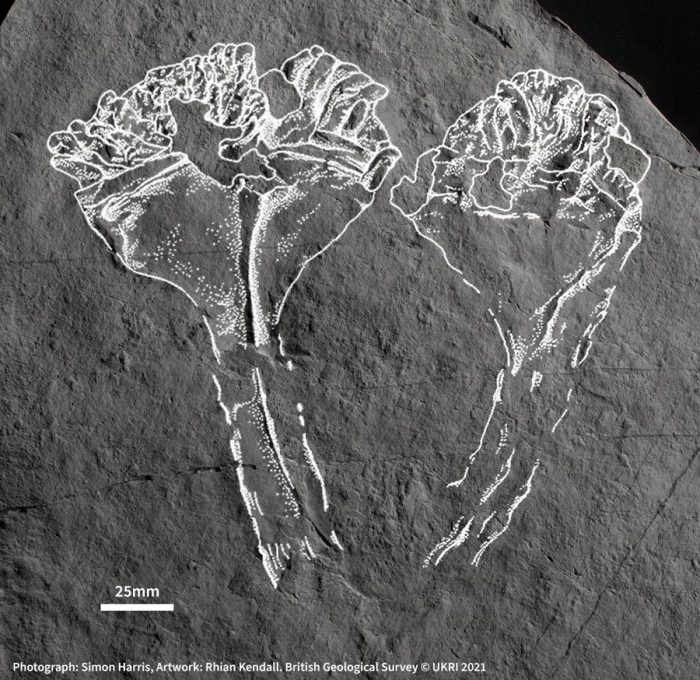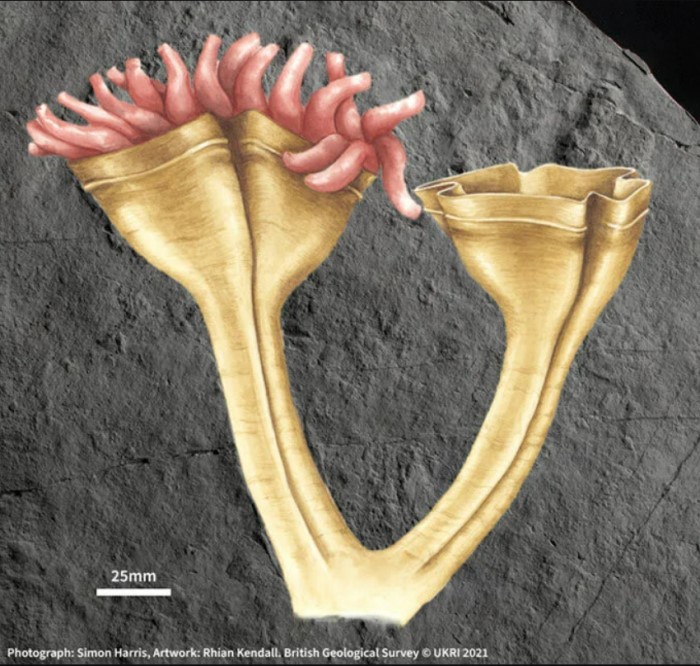Life has been on Earth for about 3.5 billion years. But for much of that time, living things were little more than microscopic single-celled organisms and bacteria.
It wasn't until around 600 million years ago that multi-cellular life forms emerged. This allowed for plants and animals to develop, a.k.a. complex life!
This really came to a peak during a period known as the Cambrian Period. The Cambrian Explosion—from 541 to 530 million years ago—was the first massive emergence of new living things. Suddenly, Earth's seas were full of fascinating, never-before-seen plants and animals (it was still all in the water, there was no complex life on land yet).
But before that, during the Ediacaran Period, life was slowly getting itself ready for that dramatic Cambrian performance. This is when some of the very first creatures arrived.
Case in point? A new 560-million-year-old fossil that paleontologists believe is the world earliest predator!
Hunting in place
Called Auroralumina attenboroughii (and named after the British nature documentarian behind the Planet Earth series, David Attenborough), this animal is not exactly a sharp-toothed fish, or even a crab or scorpion-like crustacean. These types of hunters were still many millions of years away from existing. In fact, it wasn't even a creature that was able to move around.
With its rooted base, long 'stem', and blooming head of tentacles, it almost looked like a flower. But it was a predator, one that likely worked similarly to modern corals or anemones. It would catch things that drifted close enough for it to pull into its mouth.
As funny as it might seem now, from sharks to tarantulas, wolves to hawks, that hunting way of life all began here!
Not all that different to today

The stone with the fossil, with the creature's outline drawn over it. (BGS/UKRI)
Maybe the thing that sticks out the most about A. attenboroughii is that it is similar to many of the creatures that followed it. Most of the fossils from the Ediacaran Period are known for the fact that they almost seem alien and aren't like anything that exist today. But A. attenboroughii shows a lot of features that would go on to become very common in the Cambrian and beyond.
"It's nothing like anything else we've found in the fossil record at the time," said Frankie Dunn in the British Geological Survey. He is a paleontologist at the Oxford University Museum of Natural History and helped to study the fossil.
"Most other fossils from this time have extinct body plans and it's not clear how they are related to living animals," he continued, "This one clearly has a skeleton, with densely packed tentacles that would have waved around in the water capturing passing food, much like corals and sea anemones do today."
Oh, that's right! We forgot to mention earlier that A. attenboroughii is also the earliest known creature with a skeleton. That's a pretty big deal. Who knew there could be so much groundbreaking evolution in one creature?
For more talk about the earliest days of life on Earth, check out our review of the Royal Ontario Museum's permanent exhibit Dawn of Life, which opened this year.
 It may not look like it, but this fellow is where hunting began on Earth! (BGS/UKRI)
It may not look like it, but this fellow is where hunting began on Earth! (BGS/UKRI)









